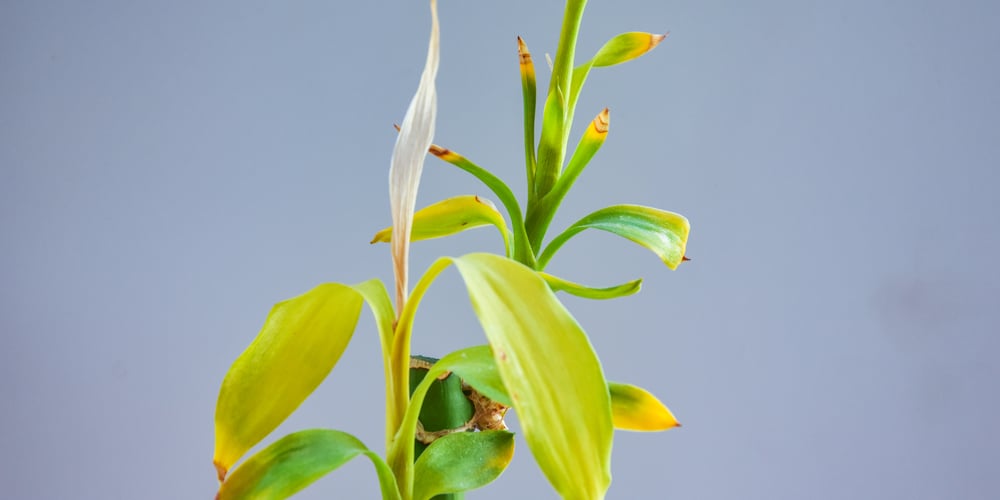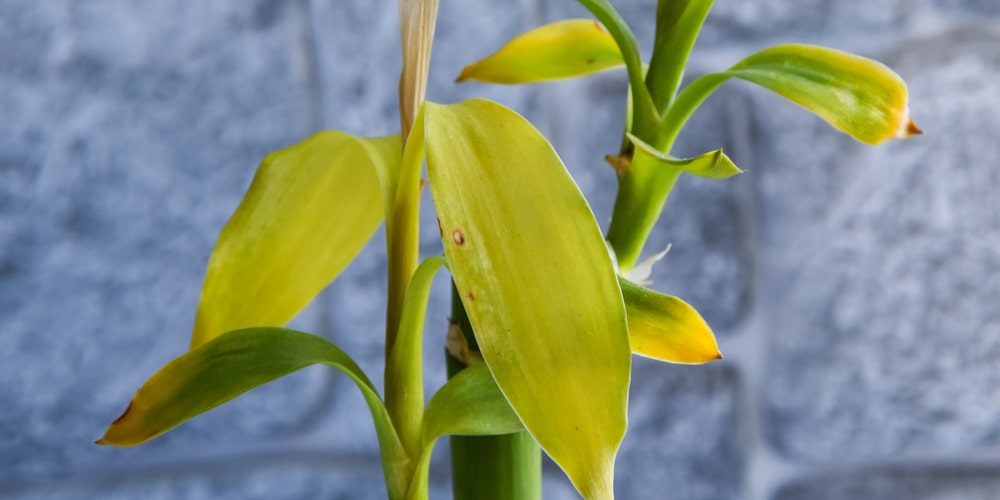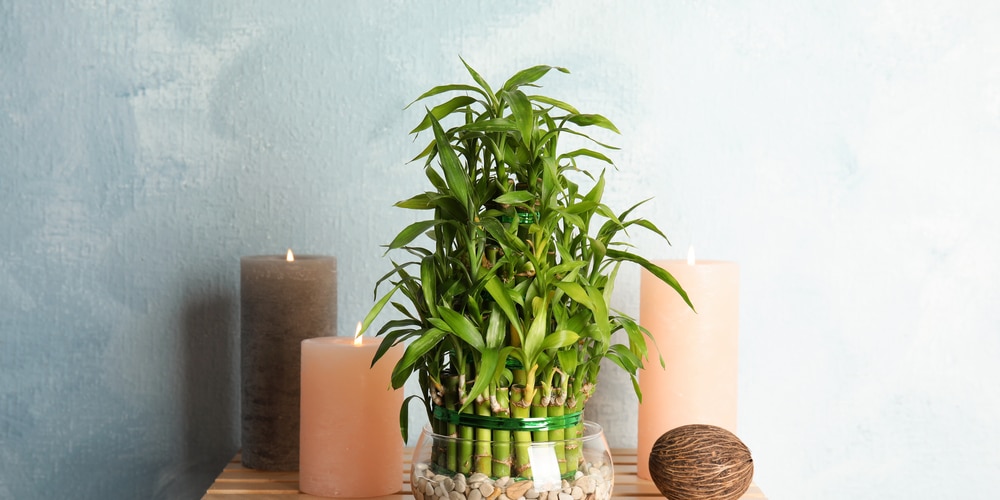Lucky bamboo (Dracaena sanderiana) is a popular houseplant that originated in Africa. It has low care requirements and can prosper in a wide range of environments, making it ideal for both novice and experienced plant owners alike.
However, despite its resilience, lucky bamboo is not immune to disease. One of the main problems that can affect this plant is root rot. This is a serious condition that can quickly kill a lucky bamboo plant if it is not treated promptly.
In this article, we will take a look at what causes root rot in lucky bamboo plants, how to identify it, and what you can do to treat and prevent it.
Reasons for root rot in lucky bamboo plants
There are a number of reasons why root rot can occur in lucky bamboo plants. Here are the most common:
Overwatering
The leading cause of root rot in lucky bamboo is overwatering. This plant does not require a lot of water and will actually suffer if it is overwatered. In addition to this, there are two other conditions that worsen root rot from overwatering: wetting the leaves of your plant, and a serious lack of light.
Fungal infection
Fungal infections are another common cause of root rot. They are caused by root rot-causing fungus that can remain in potting soil for months, even years.
Under the right conditions such as excess humidity from, say overwatering, the fungi become active and can cause an infection. Once a fungal infection takes hold, it can quickly spread to the rest of the plant, causing serious damage.
Watering plants in dormancy
Lucky bamboo plants go through a dormant period during the winter months. During this time, they will not need as much water and you should actually reduce the amount you give them. Overwatering during dormancy can lead to root rot.
Poor drainage
If the pot that your lucky bamboo plant is in does not have good drainage, this can also lead to root rot. When water collects in the pot, it deprives the roots of oxygen and can suffocate them. As if that is not enough, it also creates the perfect environment for fungal infections to thrive.
How to identify root rot in lucky bamboo plants
It’s crucial to catch root rot early, as this will give you the best chance of saving your plant. Here are some signs to look out for:
Yellowing or wilting leaves
One of the first signs that your lucky bamboo has root rot is when the leaves start to yellow or wilt. This is a sign that the plant is not receiving the nutrients it needs and is struggling to survive.
The stems are mushy or soft
Another typical sign of root rot is stems that are mushy or soft. This is caused by the plant’s roots beginning to rot away and can lead to the plant toppling over.
The plant has black or brown patches
If your lucky bamboo plant has black or brown patches on the leaves, stems, or roots, this is another sign that it is suffering from root rot. These patches are caused by the fungus beginning to consume the plant.
Foul-smell from the soil
Whenever the soil around your lucky bamboo plant has a foul smell, it could be another sign of root rot. This is caused by the decomposing roots releasing a foul odor.
Black, soft, or mushy roots
Roots that are black, soft, or mushy are a sure sign of root rot. At this stage, the plant is in serious trouble and will likely not recover without treatment.
Treating and preventing root rot in lucky bamboo plants
If you think your lucky bamboo plant has root rot, it is important to take action immediately. The sooner you act, the better chance your plant has of surviving.
Here are some tips for treating and preventing root rot in lucky bamboo plants:
Cease watering immediately
If you think your plant has root rot, the first thing you should do is stop watering it. It might seem counterintuitive, but overwatering is what got your plant into this situation in the first place. Allowing the plant to dry out will give it a chance to recover.
Unpot the plant and inspect it
Once you have stopped watering the plant, it is time to unpot it and inspect the roots. If all of them are black, mushy, or soft, it may be too late. However, if there are at least a few healthy roots remaining, there is a chance your plant can be saved.
Cut away the affected roots
Once you have found the healthy roots, carefully cut away any that are black, mushy, or soft. These are the roots that are infected with root rot and need to be removed.
Repot the plant in fresh soil
After you have cut away the infected roots, it is time to repot your plant in fresh soil. Be sure to use a pot that has good drainage to prevent the problem from happening again.
Take some time before watering
Once your plant is repotted, do not water it immediately. Wait a few days to give the roots a chance to recover. Once they have had a chance to dry out and recover, you can start watering your plant again. Just be sure not to overwater it.
Preventing root rot in lucky bamboo plants
The best way to deal with root rot is to prevent it from happening in the first place. Here are some tips for preventing root rot in lucky bamboo plants:
Use a well-draining pot
When choosing a pot for your lucky bamboo plant, be sure to choose one that has good drainage. This will help to prevent water from pooling around the roots and causing them to rot.
Water your plant regularly
Be sure to water your plant on a regular basis. Do not let the soil dry out completely or become soggy. The goal is to keep the soil evenly moist.
Place your plant in an ideal environment
To give your plant the best chances of survival, place it in a spot that is moderately warm, has average humidity, is well-lit with indirect sunlight, and has enough airflow.
Inspect your plant regularly
Inspect your lucky bamboo plant regularly for signs of root rot. If you catch it early, you will have a better chance of saving your plant.
Remove affected plants immediately
If you notice that one of your plants is beginning to show signs of root rot, remove it from the pot immediately. This will help to prevent the problem from spreading to other plants.
Disinfect your tools
After you have removed an affected plant, be sure to disinfect your tools. This will help to prevent the spread of root rot to other plants.
Concluding thoughts
Root rot is a serious problem that can kill your lucky bamboo plant. As such, your best bet would be to prevent it from happening in the first place. However, if your plant does get root rot, you should take action immediately so that you can have the best possible shot at saving your plant.


